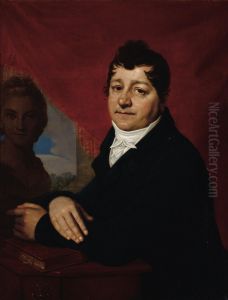Vladimir Boroviskovsky Paintings
Vladimir Lukich Borovikovsky was a prominent Russian portraitist of Ukrainian origin during the late 18th and early 19th centuries. Born on July 24, 1757, in Myrhorod, now in Ukraine, then part of the Russian Empire, he hailed from a family of Cossack nobility. Initially, Borovikovsky was taught icon painting by his father, who was a respected icon craftsman. This early exposure to religious art would influence his later work, which often carried a touch of spirituality and a refined use of color.
In the 1780s, Borovikovsky moved to St. Petersburg, where his talent caught the eye of influential patrons, and he was introduced to the circle of Catherine the Great. It was here that he made the transition to secular art and developed his signature style, which combined the grandeur of Russian portraiture with the sentimentality and delicacy found in European sentimentalist art. His portraits are characterized by a soft elegance, capturing not just the physical likeness but also the inner world of his subjects.
Borovikovsky became a favorite among Russian nobility and royalty, painting portraits of many important figures, including Catherine the Great and her grandsons Alexander I and Nicholas I. He was particularly noted for his portraits of women, where he showcased his ability to render textiles and textures with exquisite detail, while also conveying the grace and personality of his sitters.
Despite his success, Borovikovsky remained somewhat apart from the mainstream of Russian cultural life and did not engage much with the academic art institutions of his time. He continued painting until his death on April 6, 1825, in St. Petersburg. Today, Borovikovsky's works are held in high esteem and can be found in major museums in Russia, including the Tretyakov Gallery and the Russian Museum, as well as in private collections. His contribution to Russian art, particularly portraiture, marks him as one of the key figures bridging the Rococo and Neoclassical styles in Russia.
